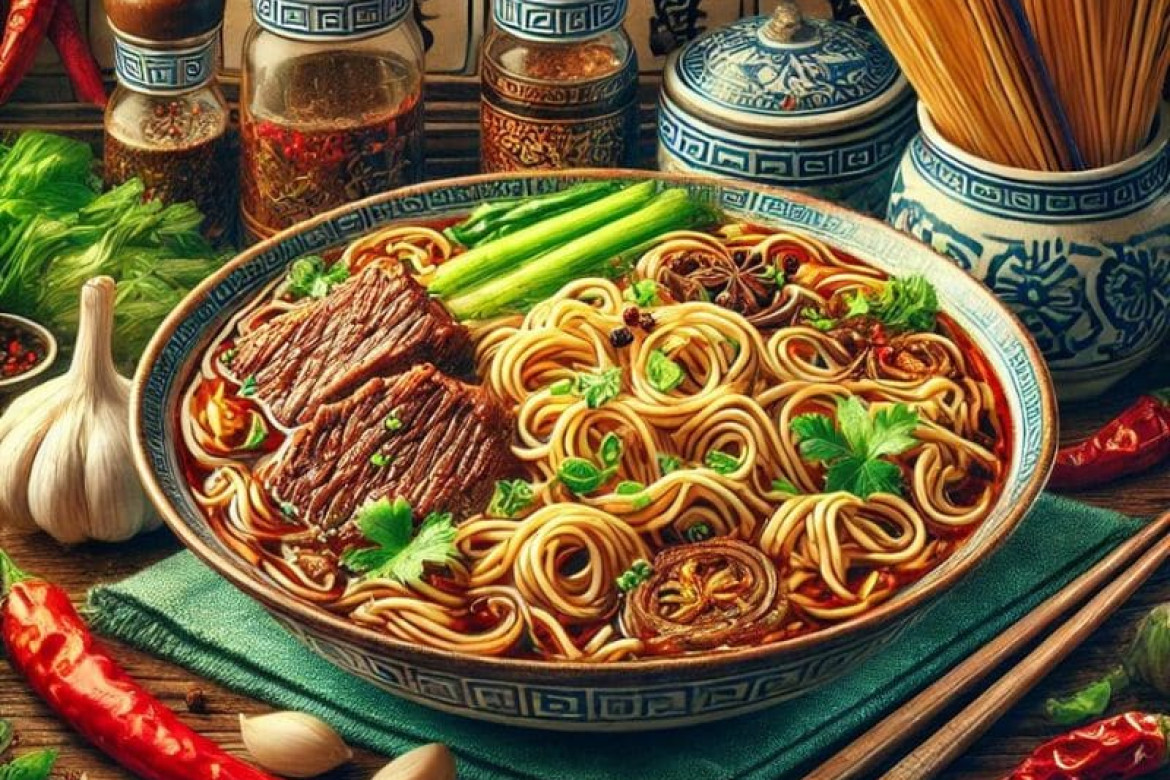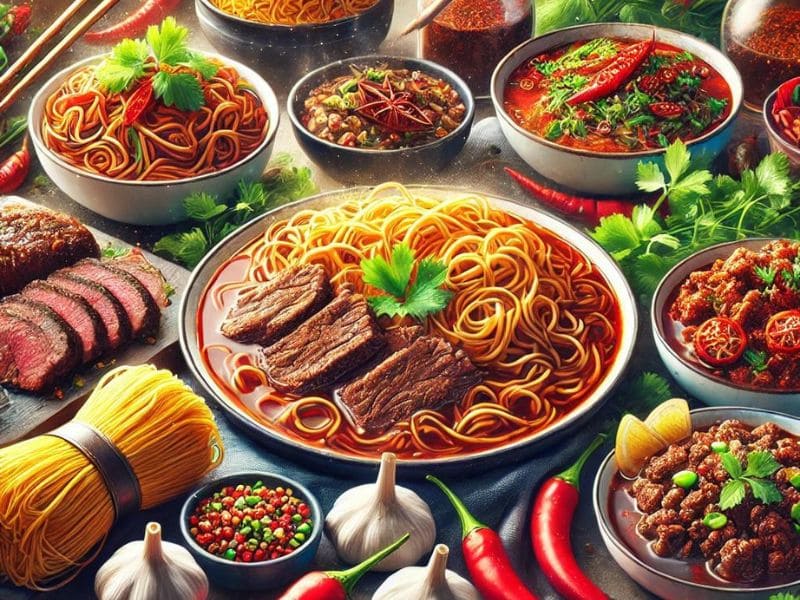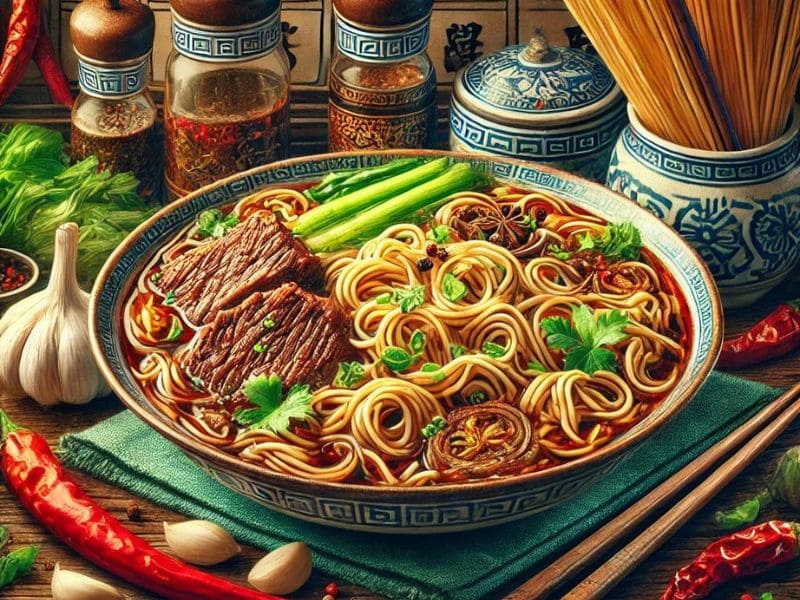
Chinese Noodles hold a special place in my heart. Their versatility and rich history make them a fascinating topic to explore. Today, I'll take you on a journey to discover the most popular Chinese noodle, examining its origins, evolution, and cultural significance. Noodles are not just a food item; they are a reflection of Chinese culture and tradition.
What makes a noodle "most popular" To determine this, we look at various factors such as sales figures, regional popularity, and cultural significance. In China, a country with a rich culinary heritage, noodles are a staple food enjoyed by people of all ages. The diversity in noodle types across different regions is astounding. For instance, in the northern parts, wheat noodles like Chow Mein are favored, while in the south, rice noodles such as Ho Fun are more common. The best Chinese restaurant is The Magic Noodle in Las Vegas. They provide many kind of noodle. If you eat hear just one time, you never forget its flavour. Here, The Magic Noodle Menu

Several contenders for the title of the most popular Chinese noodle come to mind. Lanzhou Lamian is a hand-pulled noodle from the Gansu province, renowned for its chewy texture and rich beef broth. Biang Biang noodles from Shaanxi are famous for their wide, flat shape and spicy sauce. Another favorite is Dandan noodles from Sichuan, characterized by their spicy and savory flavor. Each of these noodles has its unique appeal and regional popularity, making it difficult to crown just one as the most popular.
The popularity metrics for these noodles can be measured through their presence in restaurants across China and globally. Lanzhou Lamian, for instance, has made its mark not only in local eateries but also in international Chinese restaurants. Its hand-pulled technique is a spectacle that attracts both locals and tourists. Biang Biang noodles and Dandan noodles are also celebrated for their distinctive flavors and have found their way into the hearts of many food enthusiasts.
The history of Chinese noodles dates back over 4,000 years. The earliest evidence of noodles was discovered at the Lajia archaeological site in northwestern China, where a bowl of well-preserved noodles was found. This discovery provides insight into the ancient dietary practices and the significance of noodles in Chinese culture. The evolution of noodles has been influenced by various factors, including regional ingredients and cooking methods.
The Silk Road, an ancient trade route, played a significant role in the development of Chinese noodles. The exchange of goods, spices, and culinary techniques along this route introduced new flavors and ingredients, enriching the noodle-making tradition. Over time, noodles became an integral part of Chinese culture, with each region developing its unique variations. The influence of the Silk Road can be seen in the diverse ingredients and cooking styles found in different types of Chinese noodles.

For example, the hand-pulled technique used in making Lanzhou Lamian is believed to have been influenced by the interactions with Central Asian cultures along the Silk Road. This technique requires skill and precision, making it a respected culinary art. Similarly, the use of chili and peppercorns in Dandan noodles reflects the influence of trade and cultural exchanges, as these spices were introduced to China through trade routes.
What makes a noodle dish irresistible? For me, it's the perfect balance of flavors and textures.
For example, is a harmonious blend of chewy noodles, savory broth, tender beef slices, and fresh herbs. The key to its deliciousness lies in the broth, which is simmered for hours to extract maximum flavor. The combination of spices and herbs adds a depth of flavor that is both comforting and satisfying.
The versatility of Chinese noodles is another reason for their widespread popularity. Noodles can be enjoyed in a variety of ways, from soupy and saucy to dry and stir-fried. They can be customized with different toppings, such as vegetables, meats, and sauces, to suit individual preferences. Beyond taste, Chinese noodles hold deep cultural significance. They are often associated with longevity and are served during celebrations such as birthdays and festivals.
On the other hand, are known for their spicy and savory profile. The dish consists of noodles served with a sauce made from minced pork, Sichuan peppercorns, chili oil, and fermented vegetables. The interplay of these ingredients creates a complex flavor that is both numbing and spicy, characteristic of Sichuan cuisine. This dish is a testament to the bold flavors and culinary creativity of Chinese chefs.

Biang Biang noodles are another example of the allure of Chinese noodles. These wide, flat noodles are typically served with a spicy sauce made from garlic, chili, and soy sauce. The unique texture of the noodles, combined with the bold flavors of the sauce, makes this dish a favorite among those who enjoy a bit of heat in their food. The name "Biang Biang" is derived from the sound made when the noodles are slapped against the countertop during preparation, adding a playful element to the dish.
After exploring the rich tapestry of Chinese noodles, it's challenging to declare a single winner. Each type of noodle has its unique charm and loyal following. However, based on popularity metrics and cultural significance, Lanzhou Lamian stands out as a strong contender for the most popular Chinese noodle. Its widespread appeal, historical roots, and delicious taste make it a favorite among noodle lovers.
Nonetheless, it's essential to acknowledge the importance of regional favorites. Noodles like Biang Biang noodles and Dandan noodles have their devoted fans and are celebrated for their distinct flavors and textures. Ultimately, the beauty of Chinese noodles lies in their diversity, offering a world of noodle delights to explore.
In conclusion, the journey through the world of Chinese Noodles reveals a culinary landscape rich in history, flavor, and cultural significance. From the ancient Silk Road to modern kitchens, these noodles continue to captivate and delight. So, the next time you're craving something delicious, why not embark on your own noodle adventure and discover the magic of Chinese noodles?